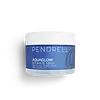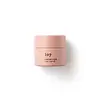What's inside
What's inside
 Key Ingredients
Key Ingredients

 Benefits
Benefits

 Concerns
Concerns

No concerns
 Ingredients Side-by-side
Ingredients Side-by-side

Water
Skin ConditioningGlycerin
HumectantHydroxyacetophenone
AntioxidantPanthenol
Skin ConditioningSodium Hyaluronate
HumectantPolyglutamic Acid
Skin ConditioningCaprylhydroxamic Acid
1,2-Hexanediol
Skin ConditioningDisodium EDTA
Beta-Glucan
Skin ConditioningBoswellia Serrata Extract
Skin ConditioningCopper Tripeptide-1
Skin ConditioningCentella Asiatica Extract
CleansingSqualane
EmollientGlyceryl Caprylate
EmollientNiacinamide
SmoothingTocopherol
AntioxidantTrehalose
HumectantAloe Barbadensis Leaf Extract
EmollientPentylene Glycol
Skin ConditioningSophora Angustifolia Root Extract
Skin ConditioningLycium Barbarum Fruit Extract
AstringentEchinacea Purpurea Extract
MoisturisingFucus Vesiculosus Extract
EmollientBetula Alba Bud Extract
Skin ConditioningXanthan Gum
EmulsifyingCrithmum Maritimum Extract
Skin ConditioningWater, Glycerin, Hydroxyacetophenone, Panthenol, Sodium Hyaluronate, Polyglutamic Acid, Caprylhydroxamic Acid, 1,2-Hexanediol, Disodium EDTA, Beta-Glucan, Boswellia Serrata Extract, Copper Tripeptide-1, Centella Asiatica Extract, Squalane, Glyceryl Caprylate, Niacinamide, Tocopherol, Trehalose, Aloe Barbadensis Leaf Extract, Pentylene Glycol, Sophora Angustifolia Root Extract, Lycium Barbarum Fruit Extract, Echinacea Purpurea Extract, Fucus Vesiculosus Extract, Betula Alba Bud Extract, Xanthan Gum, Crithmum Maritimum Extract
Water
Skin ConditioningButylene Glycol
HumectantGlycerin
HumectantCyclopentasiloxane
EmollientHelianthus Annuus Seed Oil
EmollientSqualane
EmollientBacillus/Corchorus Olitorius Leaf Ferment Filtrate
Skin ConditioningPEG/PPG-18/4 Copolymer
SolventIsostearyl Isostearate
Emollient1,2-Hexanediol
Skin ConditioningCetyl Alcohol
EmollientAluminum Starch Octenylsuccinate
AbsorbentCyclohexasiloxane
EmollientPolysorbate 60
EmulsifyingDimethiconol
EmollientGlyceryl Stearate
EmollientPEG-100 Stearate
Sorbitan Stearate
EmulsifyingLactobacillus/Soymilk Ferment Filtrate
Skin ConditioningLactobacillus/Punica Granatum Fruit Ferment Extract
Skin ConditioningArginine
MaskingAcrylates/C10-30 Alkyl Acrylate Crosspolymer
Emulsion StabilisingLactobacillus
Skin ConditioningSimmondsia Chinensis Seed Oil
EmollientPanthenol
Skin ConditioningTrehalose
HumectantAllantoin
Skin ConditioningSodium Hyaluronate
HumectantPolyglutamic Acid
Skin ConditioningPyrus Communis Fruit Extract
Skin ConditioningBeta-Glucan
Skin ConditioningRosa Damascena Flower Water
MaskingPrunus Persica Fruit Extract
AbrasiveHedera Helix Leaf/Stem Extract
AntimicrobialPimpinella Anisum Fruit Extract
MaskingVanilla Planifolia Fruit Extract
Skin ConditioningVinegar
Cucumis Melo Fruit Extract
Skin ConditioningPhenoxyethanol 0.52%
PreservativeWater, Butylene Glycol, Glycerin, Cyclopentasiloxane, Helianthus Annuus Seed Oil, Squalane, Bacillus/Corchorus Olitorius Leaf Ferment Filtrate, PEG/PPG-18/4 Copolymer, Isostearyl Isostearate, 1,2-Hexanediol, Cetyl Alcohol, Aluminum Starch Octenylsuccinate, Cyclohexasiloxane, Polysorbate 60, Dimethiconol, Glyceryl Stearate, PEG-100 Stearate, Sorbitan Stearate, Lactobacillus/Soymilk Ferment Filtrate, Lactobacillus/Punica Granatum Fruit Ferment Extract, Arginine, Acrylates/C10-30 Alkyl Acrylate Crosspolymer, Lactobacillus, Simmondsia Chinensis Seed Oil, Panthenol, Trehalose, Allantoin, Sodium Hyaluronate, Polyglutamic Acid, Pyrus Communis Fruit Extract, Beta-Glucan, Rosa Damascena Flower Water, Prunus Persica Fruit Extract, Hedera Helix Leaf/Stem Extract, Pimpinella Anisum Fruit Extract, Vanilla Planifolia Fruit Extract, Vinegar, Cucumis Melo Fruit Extract, Phenoxyethanol 0.52%
 Reviews
Reviews

Ingredients Explained
These ingredients are found in both products.
Ingredients higher up in an ingredient list are typically present in a larger amount.
1,2-Hexanediol is a synthetic liquid and another multi-functional powerhouse.
It is a:
- Humectant, drawing moisture into the skin
- Emollient, helping to soften skin
- Solvent, dispersing and stabilizing formulas
- Preservative booster, enhancing the antimicrobial activity of other preservatives
Beta-Glucan is a polysaccharide. It can be derived from the cell walls of seaweed, oats, yeast, and fungi. It hydrates the skin and helps boost your skin's natural barrier.
As an antioxidant, beta-glucan helps fight free-radicals. Free-radicals are molecules that may damage your skin cells, such as pollution.
Studies show this ingredient may be an effective wrinkle reducer as it can deeply penetrate into skin. It has also been show to help with wound healing.
Learn more about Beta-GlucanGlycerin is already naturally found in your skin. It helps moisturize and protect your skin.
A study from 2016 found glycerin to be more effective as a humectant than AHAs and hyaluronic acid.
As a humectant, it helps the skin stay hydrated by pulling moisture to your skin. The low molecular weight of glycerin allows it to pull moisture into the deeper layers of your skin.
Hydrated skin improves your skin barrier; Your skin barrier helps protect against irritants and bacteria.
Glycerin has also been found to have antimicrobial and antiviral properties. Due to these properties, glycerin is often used in wound and burn treatments.
In cosmetics, glycerin is usually derived from plants such as soybean or palm. However, it can also be sourced from animals, such as tallow or animal fat.
This ingredient is organic, colorless, odorless, and non-toxic.
Glycerin is the name for this ingredient in American English. British English uses Glycerol/Glycerine.
Learn more about GlycerinPanthenol is a common ingredient that helps hydrate and soothe the skin. It is found naturally in our skin and hair.
There are two forms of panthenol: D and L.
D-panthenol is also known as dexpanthenol. Most cosmetics use dexpanthenol or a mixture of D and L-panthenol.
Panthenol is famous due to its ability to go deeper into the skin's layers. Using this ingredient has numerous pros (and no cons):
Like hyaluronic acid, panthenol is a humectant. Humectants are able to bind and hold large amounts of water to keep skin hydrated.
This ingredient works well for wound healing. It works by increasing tissue in the wound and helps close open wounds.
Once oxidized, panthenol converts to pantothenic acid. Panthothenic acid is found in all living cells.
This ingredient is also referred to as pro-vitamin B5.
Learn more about PanthenolPolyglutamic Acid is made up many glutamic acids chained together. It is created from bacterial fermentation.
This ingredient is an effective skin hydrator and may help speed up wound healing. As a humectant, it draws and holds water to the skin. This ingredient is often compared to hyaluronic acid or glycerin. Similarly to hyaluronic acid, it can vary in molecular weights. This means polyglutamic acid is capable of bringing hydration to lower levels of the skin.
Fun fact: Polyglutamic Acid is found in the Japanese food, natto. It is also being used in cancer treatment studies.
Learn more about Polyglutamic AcidSodium Hyaluronate is hyaluronic acid's salt form. It is commonly derived from the sodium salt of hyaluronic acid.
Like hyaluronic acid, it is great at holding water and acts as a humectant. This makes it a great skin hydrating ingredient.
Sodium Hyaluronate is naturally occurring in our bodies and is mostly found in eye fluid and joints.
These are some other common types of Hyaluronic Acid:
Learn more about Sodium HyaluronateSqualane is an emollient that helps the skin hold onto moisture. It's an oily liquid that occurs naturally in certain types of fish and plant oils.
Because squalane boosts hydration in the skin, it also comes with plenty of benefits: it is an antioxidant and can help fight free radicals and skin damage. Squalane is also found to have a detoxifying effect when applied.
Squalane comes from squalene, which occurs naturally within the sebum of our skin. It is one of the oils our skin produces to keep itself hydrated. Squalane is the hydrogenated version of squalene and has a longer shelf life.
Research shows that squalane is non-irritating (even at 100% concentration).
In general, it's a fantastic ingredient. It does a great job at hydrating the skin, and it's suitable for those with sensitive skin.
The source of squalane may impact malassezia / fungal acne. This is because olive oil derived squalane can contain impurities such as fatty acids and plant waxes. Sugarcane derived squalane is recommended for anyone with malassezia concerns.
Is squalane vegan?
This depends on the source. Squalane can be derived from both plants and animals. Most squalane used in skincare comes from plants.
Please note: the source of squalane is only known if disclosed by the brand. We recommend reaching out to the brand if you have any questions about their squalane.
Read more about squalene with an "e".
Is squalane an oil?
Squalane is often called an oil, but it’s technically not; it’s a hydrocarbon, meaning it’s only made of carbon and hydrogen, unlike true oils which are triglycerides made of fatty acids and glycerol.
The term “oil-free” isn’t regulated, so companies can define it however they want. Some exclude all oils, while others just avoid mineral oil or comedogenic oils.
While some people avoid oils thinking they cause breakouts, the right kind of oil (or oil-like ingredient like squalane) can actually help balance and hydrate your skin. It’s worth testing out simple oils or squalane to see what works best for your skin.
Learn more about SqualaneTrehalose is a disaccharide made of two glucose molecules (glucose is sugar!). Trehalose is used to help moisturize skin. It also has antioxidant properties.
As a humectant, trehalose helps draw moisture from the air to your skin. This helps keep your skin hydrated.
Due to its antioxidant properties, trehalose may help with signs of aging. Antioxidants help fight free-radical molecules, unstable molecules that may damage your skin.
In medicine, trehalose and hyaluronic acid are used to help treat dry eyes.
Some animals, plants, and bacteria create trehalose as a source of energy to survive freeze or lack of water.
Learn more about TrehaloseWater. It's the most common cosmetic ingredient of all. You'll usually see it at the top of ingredient lists, meaning that it makes up the largest part of the product.
So why is it so popular? Water most often acts as a solvent - this means that it helps dissolve other ingredients into the formulation.
You'll also recognize water as that liquid we all need to stay alive. If you see this, drink a glass of water. Stay hydrated!
Learn more about Water